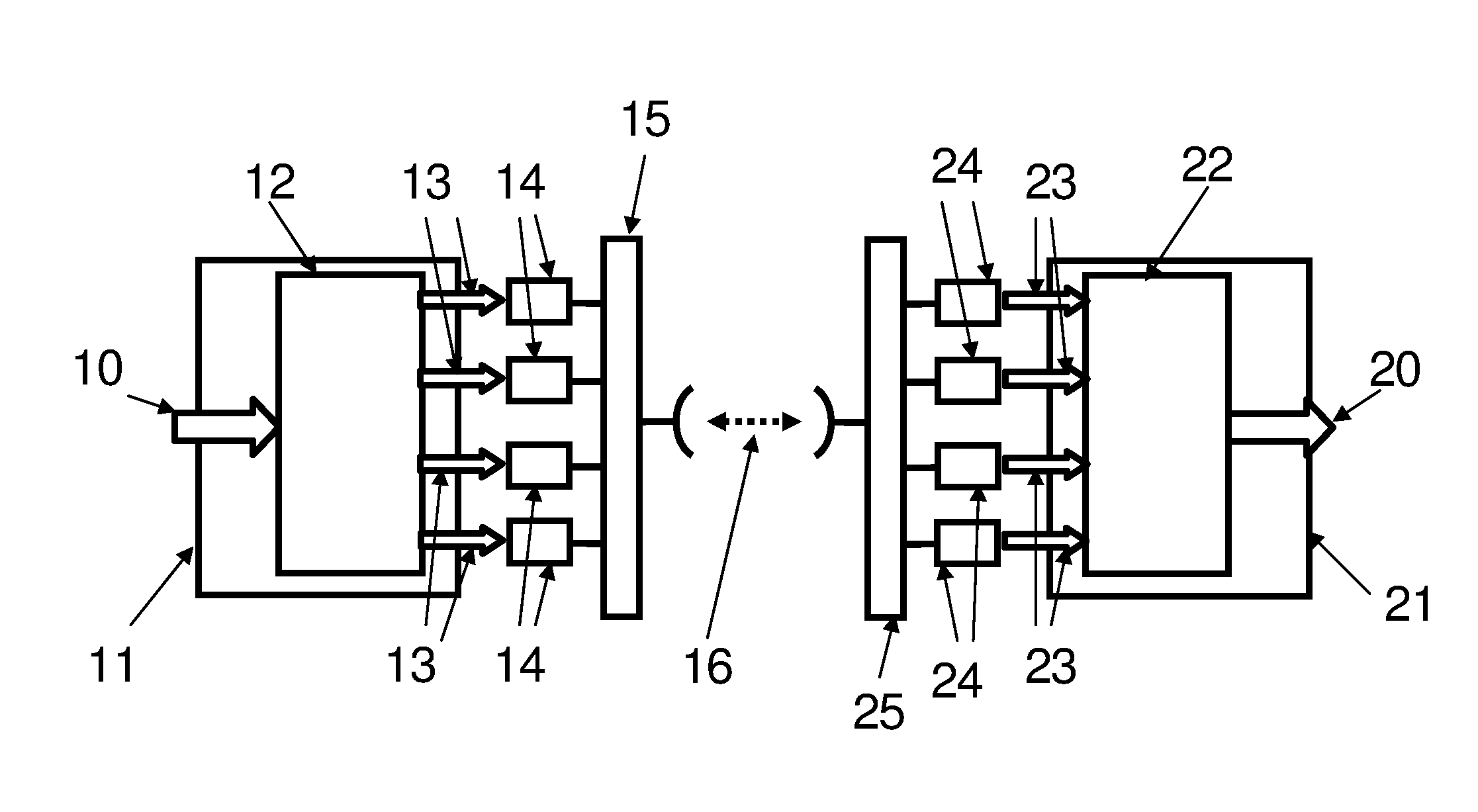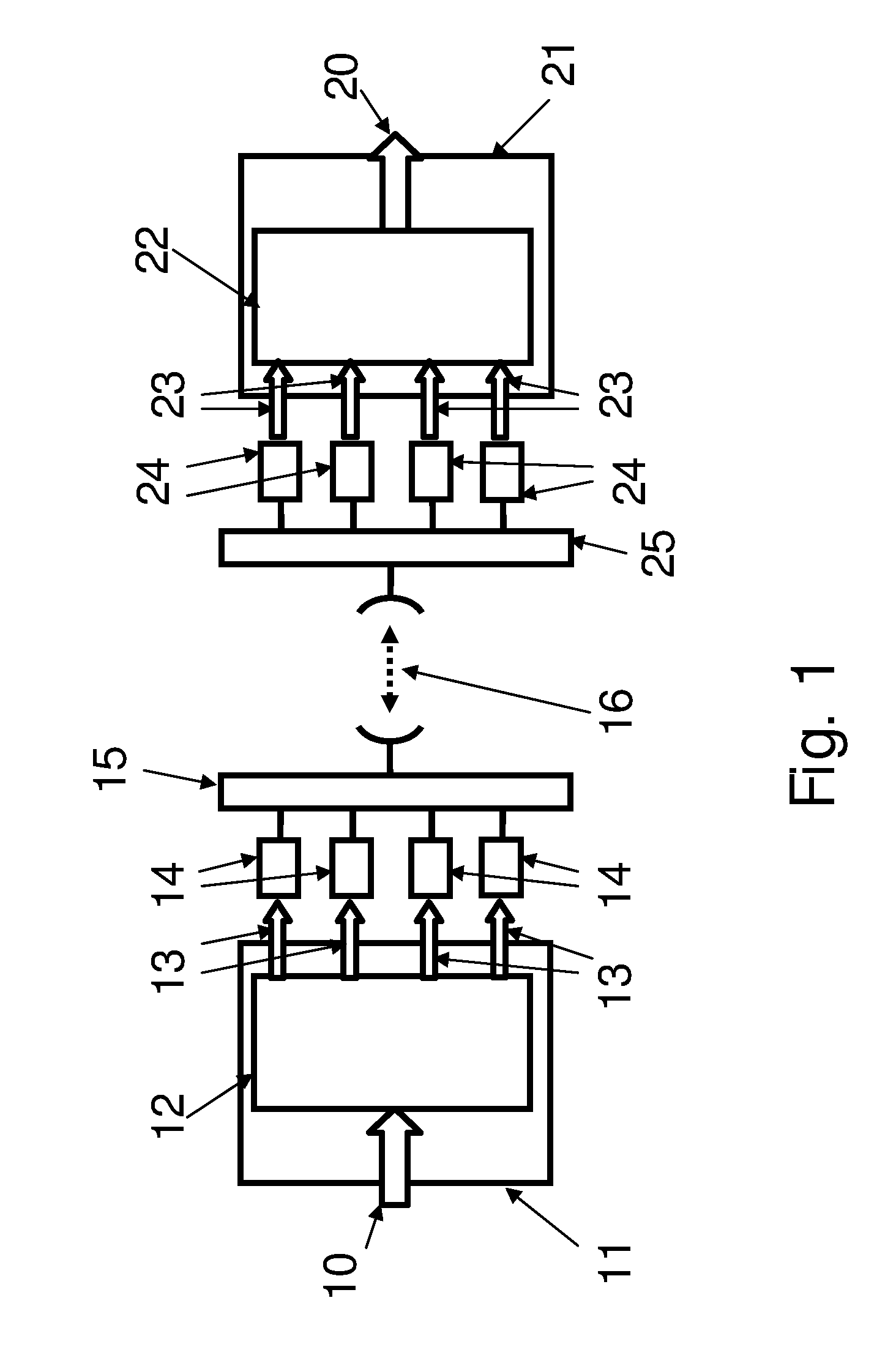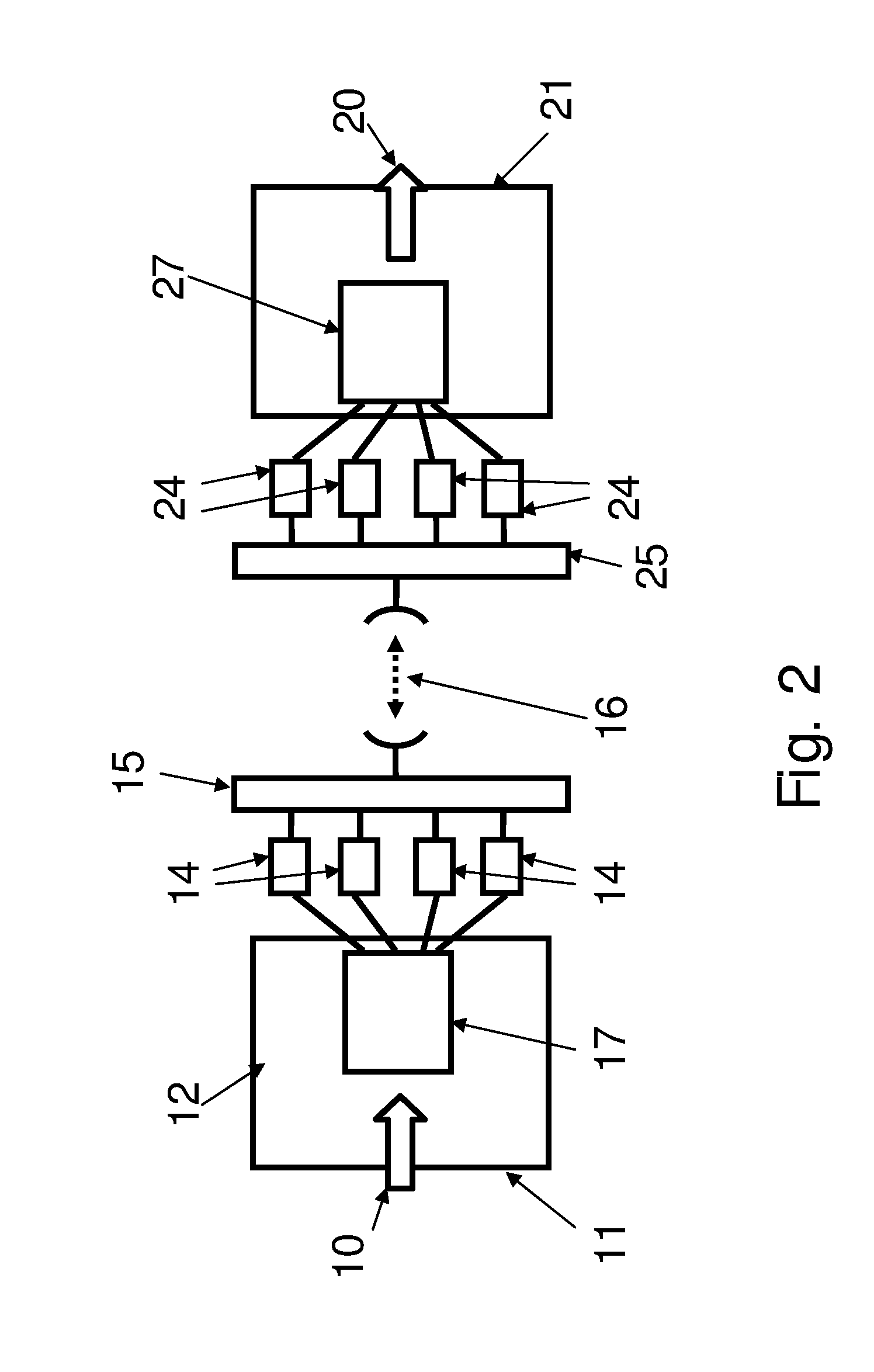System and method for multi-channel packet transmission
- Summary
- Abstract
- Description
- Claims
- Application Information
AI Technical Summary
Benefits of technology
Problems solved by technology
Method used
Image
Examples
Embodiment Construction
[0066]For a better understanding of the solution proposed herein, a brief description of an exemplary known system is first provided with reference to FIG. 1. In this figure, a conceptual scheme for one possible physical realization of a known point-to-point multi-link radio equipment is represented 1. As shown in the figure an incoming traffic 10 is input into an indoor unit 11 comprising a transmitter module 12 in charge of separating the incoming traffic into a plurality of independent radio channels 13. Each of said independent radio channels 13 is input into a respective microwave transmitter unit 14 which is in charge of transmitting an independent channel through a point-to-point radio connection as generally shown by reference numeral 16 through a branching module 15 which performs an analog sum of the signals to be transmitted.
[0067]At the receive side, the individual channels are received by a branching module 25 which allows for discriminating and filtering the different ...
PUM
 Login to View More
Login to View More Abstract
Description
Claims
Application Information
 Login to View More
Login to View More - R&D
- Intellectual Property
- Life Sciences
- Materials
- Tech Scout
- Unparalleled Data Quality
- Higher Quality Content
- 60% Fewer Hallucinations
Browse by: Latest US Patents, China's latest patents, Technical Efficacy Thesaurus, Application Domain, Technology Topic, Popular Technical Reports.
© 2025 PatSnap. All rights reserved.Legal|Privacy policy|Modern Slavery Act Transparency Statement|Sitemap|About US| Contact US: help@patsnap.com



